IGNITE Mapping Movements


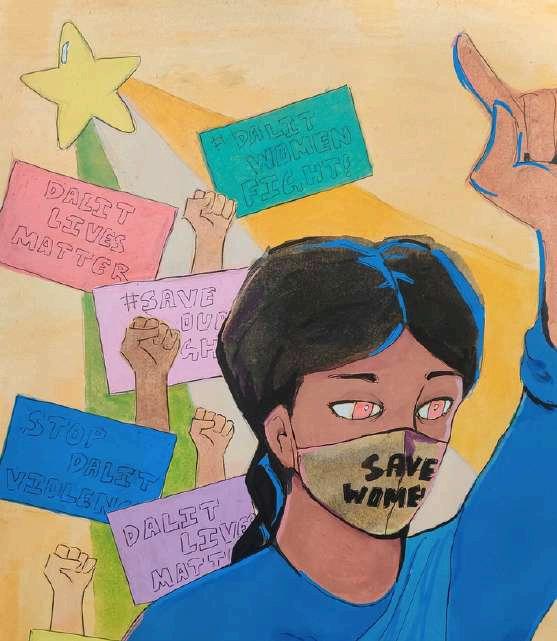














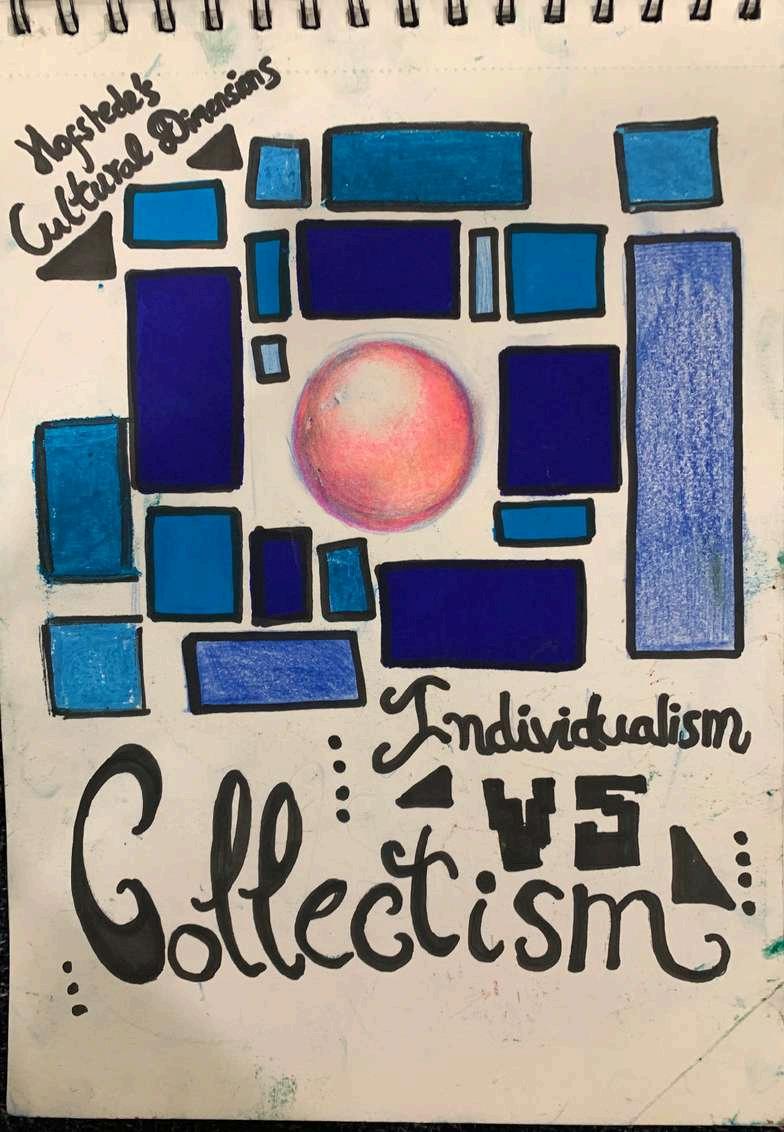



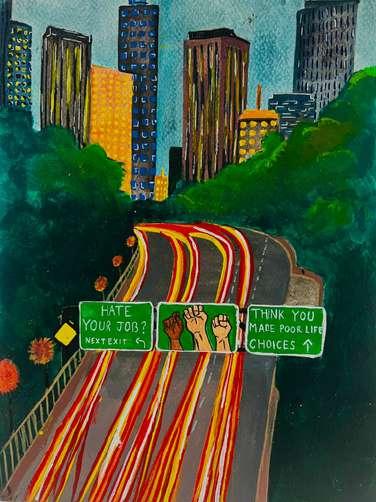


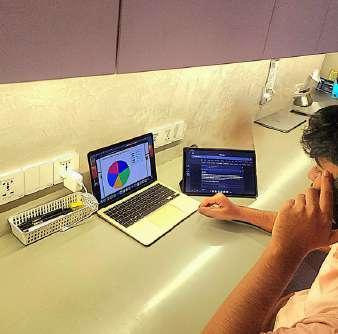




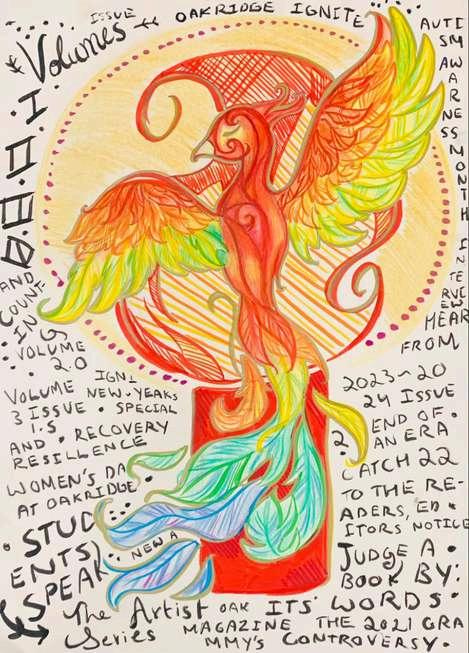








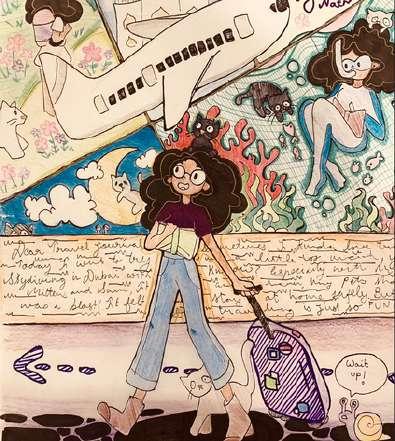



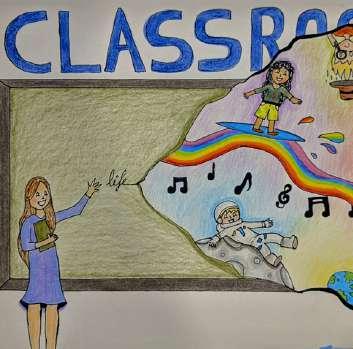

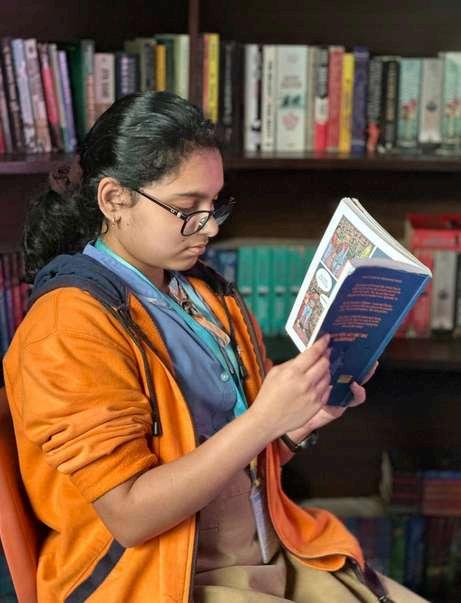












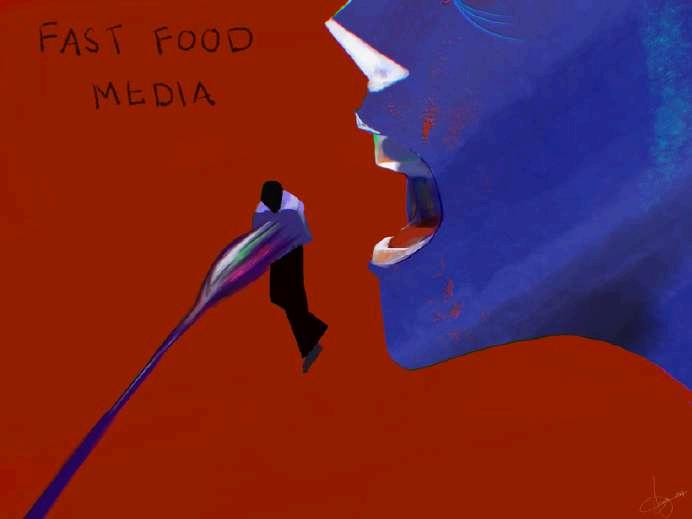







































































Dear Reader,
Welcome to the first issue of Ignite Volume 4! For over a month, our team has worked hard to create incredible articles, artwork, and photography that truly do justice to our theme ‘Mapping Movements’. For that, I am grateful. I would like to thank the Principal, Senior Leadership Team, and our Teacher-in-charge, Ms. Babita Deou, for their unwavering support and guidance. I also want to extend my thanks to our devoted staff and Editorial Board without whom we would not have been able to produce such a vibrant Issue.
‘Mapping Movements’ aims to bring information, awareness, and, above all, clarity to its readers. Navigating through the chaotic landscapes of today, team Ignite maps not in the traditional sense, that is, through cartographic lines, but through the passage of time. Here, we invite you to take a look at movements of resilience and hardship, academia and culture, and understand not just what is happening but why it is happening, how it is unfolding, and where it might lead.
Our journalists, artists, and photographers have captured the hidden depths of current events to show that nothing happens in isolation and that every movement leaves a mark on us. Additionally, our Editorial Board brings to you a special section of this issue - ‘Mapping Oakridge Ignite’. Here, we proudly reflect upon and celebrate Ignite’s previous Volumes and achievements.
Without further ado, happy reading!
Warm Regards, Eshika Kasturi Editor-In-Chief
By Tvesa Putcha
The 14th edition of the renowned Oakridge Model United Nations took place recently, centered around the theme “Global Issues and Local Solutions”. With over 800 delegates participating across 18 committees over three days, the conference was a major success, which sparked impactful discussions on global challenges. The event engaged most of the school, with students participating as delegates, organizing committee, international press, executive board, and members of the secretariat. Leading up to and after the conference, conversations about the MUN filled the school, showcasing its importance as one of the most anticipated events of the year.
I had the opportunity of participating as a part of the international press, as a photographer. This role allowed me to capture the essence of Oakridge MUN through my lens and I was able to encapsulate the intensity and depth of the debates. As I moved through each committee, I gained insight on the discussions and understood the significance of the conversations being had. From established committees to new additions, such as Buried Truth, Apollo 11, and FIA, all of them were focused on relevant and pressing issues that require attention. The delegates in each committee worked tirelessly to propose solutions, demonstrating the MUN’s goal of encouraging critical thinking and diplomacy.


By Alisha Banerjee
The first day of Oakridge MUN allowed the participants to familiarize themselves with their committees and the agendas at hand. By the second day, the international press team took the lead to spark further debate by conducting press conferences in each committee. These press conferences were vital in helping delegates refine their positions and strengthen their arguments, which moved the debate forward in impactful ways.
What struck me most throughout the conference, was the transformation I witnessed in the delegates. Initially, many delegates were still adjusting to the experience, but as the days progressed, their confidence grew significantly. By the third day, it was clear that they had made remarkable progress, presenting their positions with clarity and conviction. This progression was particularly evident during the press conferences, where delegates displayed a solid understanding of the issues and were articulate about their stance.
Beyond the committee rooms, the conference provided invaluable networking opportunities. During the networking hour on the second day, several NGOs presented their initiatives, allowing participants to engage with organizations working towards the greater good. This session not only promoted awareness of underrepresented issues but also encouraged action and education among the delegates.



Of course, Oakridge MUN would be incomplete without the much-anticipated social night, following a “Vintage Cinema” theme. This part of the conference offered a perfect break from the intense debates, bringing everyone together for an evening filled with dance performances, costume competitions as your favourite Tollywood/Bollywood actor, and fun photobooths. The social night was undoubtedly a highlight, leaving everyone with lasting memories.
By the third and final day, a sense of unity had developed, and delegates were fully prepared to present what they have been working and debating on for the entirety of the three-day conference, showing just how much they had grown over the course of the conference. The hard work and dedication put in by everyone involved was clear in the success of this year’s conference. As always, Oakridge MUN exceeded expectations, and we are already anticipating next year’s conference!

























By Sudhiksha Re
Amidst bouts of contagious laughter over nonsensical g authentic Rajasthani cuisine, and admiring the awfully p annual national trip offered a distinctive blend of advent lasting impressions beyond the classroom. This year undertook an enriching journey to Rajasthan, exploring Jaisalmer. Celebrated for its rich culture, enduring tr forts, Rajasthan is a place where every experience reson its title as the “Land of Kings.”
The journey unfolded in Jodhpur, the second-largest city an afternoon tea followed by dinner and a lively DJ party the picturesque Marugarh Resort: a quaint embodimen students travelled from Jodhpur to Jaisalmer, known as th embarked on an exhilarating evening excursion to the Sam desert all while basking in the beauty of the sunset: a core memory of the trip. This was followed by a immersive Rajasthani cultural program at the camping resort.
The following day of the expedition commenced with a visit to Jaisalmer Fort, constructed in 1156 AD: the second oldest fort in Rajasthan. Here, students had the opportunity to admire the fort’s venerable architecture and revel in its intriguing artefacts and the historical narrative they carried. Later, they unwound by Gadi Sagar Lake while soaking in the views through boating and then browsing for souvenirs. The evening reached its crescendo with a puppet show and a magic performance that left everyone astonished.
The following day, the students arrived back in the blue city of Jodhpur, Rajasthan, and started the day with an expedition to the Umaid Bhavan Palace. This grand palace was where Priyanka Chopra and Nick Jonas’s opulent three-day wedding took place, which reportedly generated a staggering three months' worth of the hotel’s revenue in just one weekend they weren’t kidding when they said “royal wedding!” The palace was constructed with gleaming golden sandstone and houses a museum filled with royal artefacts, furniture, and what enamoured students the most- vintage cars. Following this was local shopping for Rajasthani textiles and jhumkas, with the evening concluding with another exuberant DJ celebration because nothing says “culture” like a dance-off to Bollywood hits at the end of a long day.
On the final day, students visited Mehrangarh Fort which had a museum preserving many priceless relics of Indian courtly life. Perched high above the city, the fort offered students a staggering bird’s eye view of the vibrant blue hues below. But perhaps the real highlight of the trip was the bus rides, where an intense Telugu vs. Hindi song showdown kept everyone entertained (and slightly deafened) for hours. With each team vying to play their favourite songs louder than the other, the bus was nothing short of a concert hall. It turned into a mashup of DJ Tillu meets Subhanallah, with everyone shouting out lyrics in chaotic harmony. After lunch, the national trip came to an end, leaving behind a treasure trove of experiences and newfound friendships that will be cherished for a lifetime.


By Anas Arshad Ali
In the lucky lives that we share, we often overlook opportunity with requirement and want with need. This is because a lack of want, creates a need like condition, where genuine need is overlooked and pointless wants are prioritised. But in a few moments we learn the lesson of simplicity. We uncover joy in a child’s laughter, finding more meaning than we ever sought. Visiting the special children’s school, we painted not just pictures, but bridges of empathy, where we played, taught, and above all learned how to be fully human..
Many times the first emotion that comes to mind is pity but a specially abled child cannot care any less. The child is not better off, due to the pity you show, help is what is needed, pity is what is given. Most of the time, people just remorse and forget, after all we are humans. Continuous abnormality becomes normal given enough time. Yet emotion is human too, and expressing emotion through help is the best expression of sympathy. Not just because you are helping someone, but because your intentions are not just restricted to talk or show, but genuine effort. When people channel their passion into actual work, their emotions can speak clearly, whereas others who limit their emotions to be just a whisper, yield no genuine result.
This opportunity arose when me and my peers had a chance to help. Even though we had other opportunities, there are some things that just stand out. The relief of my classmates on doing some service instead of classwork, was as visible as daylight. For many, it was the movie-esque feeling they hope to achieve, maybe something like Taare Zameen Par.

Another morning at school, we woke up to the news of departure. Shalini ma’am –our CAS co-ordinator– was glowing with joy at the news of our participation, and prepared us for the trip to the school. Even though we were prepared, we did not really have an idea regarding our purpose at the Special Kid’s School. Yet just something about a field trip was interesting enough for most of us to be ready for the CAS Activity. A lot of us brought a tonne of chocolates and sugary items in preparation, but apart from that we had nothing in mind.
After we chatted and gossiped during a fairly short bus ride, we reached the destination. Most of us were surprised at what we saw. It was school, yet the surroundings revealed a deeper struggle. The paint on the walls was chipping in several places, as if the building had long been forgotten. The floor was uneven and dusty, and the classrooms, while functional, lacked basic cleanliness. Despite these conditions, the energy of the children, their laughter, and their eagerness to engage with us was clear, a energy that transformed the school into a pleasant surprise.
Before seeing the children, we decided to take up roles within the school. Some chose drawing, other sports and some teaching. I was chosen for drawing. Art is interpretive and unique; it is something that everyone, despite their backgrounds and constraints, can find solace in. This could never have been more true than at the school.
We removed our shoes and bags, and sat down with a dozen kids, all looking eager for some creativity. The younger kids were colouring and the older kids were drawing, all of them had a scenic view in mind–some thought of a flower, others of a mountainous landscape. Despite the hardship, they had a happy vision of the world. They were like a flower blooming in the middle of a wildfire.
People often reflect upon their "humbling" experiences, as the difficulty of their life pales in comparison to what these children face daily. Yet for me, it was more than humbling it was inspiring. That in hardship, there can be hope, and in the face of adversity, there is resilience. These children, despite their challenges, taught me that joy is not tied to circumstances, but to the strength of the human spirit.
While this may sound cliché, there are no other words that can accurately describe our experience. Even as we did some origami and made paper planes, which the kids enjoyed immensely, I realised that there are no words that can describe the joy these children attain by simply living Not complaining about their inconveniences or hardships, just living. Life is sometimes tough for all of us, but these children are a testament to the willpower we all must muster to face our challenges and champion them.
By Nirali Sai Machavarapu
Teachers singlehandedly shoulder the responsibility of shaping our society; yet they are still heavily underappreciated all over the world. Events such as Teacher’s Day are created for the purpose of bettering their status and providing them with the very deserved gratitude that they lack.
At Oakridge International School Gachibowli, Teacher’s Day is more than just a celebration; it is a tribute to the educators who guide, inspire, and motivate us every day. This year, the day began with students decorating their classrooms before the teachers arrived, to surprise them with a celebration. Furthermore, students from all over the school presented their teachers and mentors small tokens of appreciation, such as intricately designed cards, chocolates, and flowers.

By Praneel K
Another very memorable highlight of the celebration was the variety of performances put on by the students, showcasing their diverse talents and creativity, several groups of students sang songs and performed dances; the senior students played a vital role by helping younger students prepare for these performances. Additionally, games and other similar activities were arranged to escalate the festive spirit floating in the air.
Alongside the festivities held at school a special excursion was organized for our treasured teachers in order to further demonstrate appreciate. The break was welldeserved from their demanding routines of managing students; they went on a trip to the movie theater, where they enjoyed delicious snacks and festivities to celebrate their work and all they do for the students.




It is paramount that we remember the crucial role teachers play in our everyday lives. They are not simply instructors but mentors who steer us onto the right path and foster a love for learning and curiosity. Their guidance extends beyond the classroom playing a part in forming our morals, reasoning, and creativity.
While special occasions like Teacher’s Day provide us great opportunities to express our gratitude, we must make an effort to acknowledge their efforts everyday.
A brief thank you, a considerate note, or simply recognizing their dedication can make a notable difference.




























M a p p i n g M o v e m e n t s












By Hamsini Peri

From sturdy hardcovers to worn paperbacks with embossed titles inviting eager hands to trace them, some books have yellowed pages, others have the fresh scent of a brand-new book, and now, like magic, some appear on our screens.
Over time reading has become significantly more accessible. Today, books are widely available on the internet. Despite this, the art of reading is diminishing. Before the invention of the printing press, books belonged primarily to the upper class because they were expensive. The printing press made books cheaper to produce, making them more accessible to the literate. Also, because books were written mostly in Latin, they were inaccessible to most. When Martin Luther translated the Bible into the local language, the Bible became even more accessible, leading to more awareness about its content. In the 1970s, 60% of people said they read almost daily, dropping to just 16% by 2016, even though the literacy rate was 16% higher than in 1980.



This relatively steady decline in reading has occurred despite the fact that books are more accessible than ever. Books, often free, can be found online, especially classics. E-readers and audio books have reduced the prices of books by lowering production costs. This means that books have become even cheaper and more accessible today. During the 15th century, a jump in accessibility meant that the number of people who read increased significantly. But that isn’t the case here.
One reason for this change in trends could be the rise in technology itself. For this article, I talked to several people from different generations. I noticed that before, especially during the 1970s and 1980s, there were fewer alternatives to books, which were also easily available, at reasonable prices. In today’s world, there are a plethora of entertainment options, from movies to social media, all available at any time. Previously, however, the options were more limited. For one, there were very few channels on television, which only broadcast at specific times. This meant that before, reading was the best entertainment option, especially if other options were not available.


Another thing is that in past decades, the only portable form of entertainment was reading. People would, for example, read books or magazines to pass the time on train journeys. Today, people generally scroll through their phones. The bulk of the decline in reading habits was between the late 1990s and the 2010s. During this time, the dot-com bubble occurred, causing rapid development in internet service and technology sectors. Later came the rise of platforms like social media, all providing entertainment.


By Arya Nair

So today, people are left with a lot more options for entertainment. But this doesn’t entirely explain the enormous drop in regular reading habits. For example, Google offers free PDFs of classic books, so it is cheaper and more accessible than a Netflix subscription.
Well, one reason for this could be that media and movies are more engaging for less effort. The brain tends to be more focused when reading, but scrolling through videos and social media doesn’t require as much strain, while also engaging more senses. This can explain why people choose not to read.
Also, as younger generations are more exposed to social media, they may prefer it over books, with many only reading books when mandatory; this also explains why older generations or younger people who grew up reading tend to read more than others. The world is also getting busier. Students as young as 13 are preparing for entrance exams, 2 years earlier than before. Increasing workplace competition is making adults busier, much like with students competing for college admissions. This means less time for reading, and social media or movies may be preferred for their quick dopamine rewards, something many are tailored for.
It is, however, undeniable that reading is vital. Books can teach you new words, from prognosticator to antepenultimate, and provide fresh perspectives, teaching you lessons. Reading also boosts concentration, providing a change from social media’s swiftly changing content.
While I don’t think the number of readers will increase drastically, I think they will go up eventually. This, however, might take time, until people realize the true value of reading. Though the number of readers may drop in the short term, I believe that in the long term, when the benefits of reading are clear, we will see a surge of readers, thirsty for words in a parched desert.
ByAanyaChennupati
In a world where a taxi ride, a meal delivery, or even a freelance project is just a tap away, a fresh class of workers has emerged - part hustlers, part entrepreneurs, maneuvering through a landscape where jobs are fleeting and security is uncertain. This is the gig economy, a space where flexibility and freedom are marketed as the ultimate perks. Yet beneath this promise lies a deeper shift one that questions the long-sought rights of workers and shifts the paradigm of employment. Is this the future of work, or simply a return to the past in a modern disguise?
This economy of clicks and contracts and new breed of hustle didn’t emerge overnight; its origins can be linked to changes in labor practices and advancements in technology. Throughout history, labor rights developed in parallel with industrialization, enabling workers to guarantee stability and perks. But with the rise of digital platforms like Uber, Swiggy, and Airbnb, work became increasingly fragmented and project-based. These platforms link workers with short-term gigs, enabling businesses to address fluctuating demand without committing to full-time employees. What started as a simple but effective method to provide flexibility to both workers and businesses has now turned the traditional work ecosystem upside down, replacing security with this new kind of hustle.






The gig economy presents a complex dichotomy, offering both enticing flexibility and stark precarity. On one hand, it promises workers the freedom to choose when, where, and how much they work, appealing especially to those seeking a better work-life balance. However, this charm frequently conceals a more unsettling truth. Many people are forced into gig labor out of need rather than choice because they must navigate a job market characterized by inconsistent income and unstable employment. As traditional employment benefits fade into the background, workers find themselves without health insurance, retirement plans, or paid leave. Marginalized populations are particularly affected by this insecure existence since they may not have access to steady, full-time employment. These challenges are further exacerbated by the lack of collective bargaining, leaving gig workers vulnerable to exploitation by the very platforms that claim to offer flexibility. In this setting, the contrast between the potential for freedom and the presence of uncertainty becomes more noticeable, prompting critical questions about the future of labor rights in this changing economy.
The gig economy is not just a temporary fad; it provides insight into a wider change in the future definition of work. With the ongoing evolution of automation and artificial intelligence in various sectors, traditional positions may vanish and be substituted by fragmented, taskoriented positions reminiscent of current gig work. This might lead to an increase in temporary, as-needed positions, with workers being seen more as freelancers rather than staff, enabling companies to save money by avoiding benefits and job stability.

By Maanya Reddy
However, this change brings challenges Current labor regulations lag behind, leaving gig workers in a grey area without full protections. Policymakers are facing pressure to adapt, with discussions on benefits like health insurance and minimum wage gaining momentum. Simultaneously, new labor movements are pushing for fairer treatment. As the gig economy expands, these voices could be crucial in influencing a more equitable future of work, where worker rights are not sacrificed for technological ad future work landscape will depend on the balancing ac ss, and if these can harmoniously exist in today's ec



Freedom, flexibility, and the thrill of being your own boss these are the promises of the gig economy. However, with traditional labor rights deteriorating and workers exchanging stability for uncertainty, a dilemma arises: should everyone just quit their jobs and embrace this anything-goes grind? It’s a tempting thought a world where you set your own hours and choose your projects. Yet beneath this freedom lies a murkier reality, where stability is sacrificed for a constant hustle. The gig economy is basically a freelancer’s free-for-all and has reshaped our vision of work, turning the 9-to-5 into an unpredictable journey. As the line between freedom and exploitation blurs, Will we chart a path where flexibility and fairness coexist, or will we find ourselves running endlessly on a treadmill of uncertainty?
By Raaghav Modukuri
In today’s digital landscape, the distinction between content creation and product promotion has become increasingly blurred, raising crucial questions about authenticity and trust. Platforms like YouTube, TikTok, and Instagram have enabled a new generation of creators to thrive outside traditional media's gatekeeping structures. Initially, these creators focused on genuine storytelling and relatability, fostering a strong sense of community among viewers. However, as these platforms evolved, what began as authentic connection transformed into an algorithm-driven landscape centered around monetization, where creators increasingly prioritized brand collaborations over genuine engagem
The launch of MySpace in 2003 revolutionized social interaction, enabling users to connect globally and share their lives in unprecedented ways. As TikTok and YouTube emerged, creators began to redefine content through originality and authenticity. They shared unrefined videos showcasing their true selves, which cultivated strong connections with audiences. Initially, the focus was on building community rather than generating income However, as the number of creators surged, platforms faced a dilemma: maintain authentic content or prioritize revenue generation. Driven by profit motives, corporations leaned toward the latter, incentivizing creators to incorporate sponsored content into their narratives. Over time, what started as occasional collaborations transformed into a primary income source, significantly shifting the balance away from authentic storytelling and genuine interaction.








This evolution mirrors past trends in television and radio, where advertising has long influenced content. Early programs, like "Texaco Star Theater," were directly sponsored, creating a close relationship between content and brands. This practice evolved into shorter commercial breaks, allowing multiple advertisers to reach audiences during popular shows. Product placements became a subtle strategy, enhancing narratives while promoting brands exemplified by the iconic use of Reese's Pieces in *E.T. the Extra-Terrestrial*. Today’s digital platforms have expanded these practices, saturating content with promotional material and making it increasingly challenging for audiences to discern between genuine engagement and paid endorsements.
Currently, platforms like YouTube, Instagram, and TikTok are flooded with sponsored content. Algorithms prioritize engagement, often favoring posts that feature brand collaborations. This shift has led to a saturation of promotional material, complicating audiences’ ability to distinguish between authentic recommendations and paid endorsements. Additionally, many creators have developed their own brands, such as MrBeast’s Feastables and KSI and Logan Paul’s Prime. While this strategy can be lucrative, it raises ethical questions, particularly regarding the influence of marketing on younger audiences, who may not fully grasp the commercial nature of such promotions.
The ethical implications of sponsored content are significant, particularly concerning transparency. Viewers rely on creators for authentic perspectives, but sponsorships can create doubt. Ethical creators must disclose paid partnerships to maintain credibility and foster trust. When transparency is lacking, audiences may feel overwhelmed by promotions, eroding their perception of the content's authenticity. A recent example is the backlash against Lunchly, a snack kit brand launched by popular YouTubers. Critics labeled it a "cash grab," underscoring the risks of neglecting authenticity and transparency in favor of profit.
Conclusion substantial opportunities for creators, it also chal foundational values of trust and genuine connect essential for content creators to prioritize transp authenticity, as these are critical for maintaining influence and fostering viewer loyalty. As we navi intricate landscape, collaboration among creators platforms, and advertisers is crucial to foster a di ecosystem that celebrates sincerity and upholds t integrity of content creation Ultimately, the futur of digital content relies on our collective commitment to preserving authenticity amid the alluring temptations of profit.
In conclusion, the evolution of content creation highlights a complex tension between authenticity and monetization. While the pursuit of revenue offers




By Avyackta Madas
“I measure the progress of a community with the degree of progress that women have achieved.”
-Dr. B.R. Ambedkar.
To speak of 'women' in India as a unified group is a dangerous oversimplification. There are stark disparities in health, education, and economic standing, especially for women from marginalized communities like Dalits, Scheduled Tribes or Castes, and Muslims.
The deep fissures within the category of ‘woman’ arguably are due to the structures of caste that dominate Indian society. The very word 'caste' itself, derived from the Spanish and Portuguese term "casta," meaning "race, lineage, or breed," was used by the Portuguese to describe the hereditary social groups in India, known as 'jati.' The root of 'jati' lies in the Sanskrit word 'Jana,' which signifies 'birth.' As sociologists Anderson and Parker note, “Caste is that extreme form of social class organisation in which the position of individuals in the status hierarchy is determined by descent and birth ” This system not only dictates one’s social standing but also influences the livelihoods of women across India.

In the traditional caste system, untouchables, or Dalits, occupy the most wretched position, stripped of their rights and humanity Denied access to property, education, and basic civil freedoms, they are condemned to ‘polluting’ occupations and menial labour. The horrific stigma of 'untouchability' subjects them to brutal physical and social segregation, forcing them into the shadows of society. This relentless isolation suffocates their freedom and severely restricts their social and economic mobility, trapping them in a cycle of despair with no equal access to opportunities
In response, the Indian government has attempted to address caste discrimination and untouchability through constitutional safeguards, recognizing Scheduled Castes (SCs) and Scheduled Tribes (STs) as 'historically deprived' groups. While the practice of 'untouchability' has been legally abolished since 1947, many behaviours and norms persist. Dalits still often live in segregated areas with substandard services, experience discrimination in accessing services, and face lower pay and unequal treatment in the marketplace. For Dalit women, the problem is even more severe, as they bear a triple burden of economic deprivation, patriarchy, and caste-based discrimination. Violence against Dalits, especially women and girls, is rampant and often goes unpunished. Even in countries like India, Nepal, and Bangladesh where there are laws designed to protect Dalits, measures are poorly enforced, leaving the people vulnerable to systemic abuse.
One particularly brutal case occurred on May 29, 2014, in Uttar Pradesh, where two teenage Dalit girls, aged 14 and 16, were assaulted. Even after their families reported them missing, the police didn't take immediate action. Sadly, the next morning, the girls were found in a tragic situation. It wasn’t until the local community held a peaceful protest that brought attention to the case, that the authorities took action. While this case gained widespread attention, it reflects a larger issue where many Dalit women and girls face serious injustice
Dalit students face severe discrimination in schools, as reported by Human Rights Watch They are often ignored by teachers, made to sit at the back, and served lunches last. A United Nations Children’s Fund (UNICEF) report highlights that Dalit girls are particularly vulnerable to dropping out of school, driven out by discrimination and segregation that pushes them into child labour and modern slavery Moreover, caste and gender discrimination limit Dalit women's access to essential services like healthcare and sanitation, as documented by various United Nations (UN) agencies and NGOs
In response to these injustices, hundreds of Dalit women marched for a month across five states in India in March 2014 to demand justice and reclaim their self-respect. They visited victims of atrocities, including assault and violence, and protested outside police stations, courts, and townhouses, insisting that their cases be documented and that perpetrators face justice. Throughout the march, participants shared their experiences on social media using the hashtag #dalitwomenfight.
Dalit women are currently urging the international community to stand with them and speak out against the silence that perpetuates their discrimination. The Dalit women’s movement in Nepal is gaining strength and momentum, with numerous marches and events held to advocate for their rights. These groups are focused on raising awareness and empowering Dalit women to challenge the pervasive caste and gender discrimination in the country. They actively lobby for political representation for Dalit women and work towards enforcing Nepal’s legislation that prohibits caste-based discrimination and untouchability.

By Amogha Bandaru
Dalit women have also gained global recognition for their resilient agricultural practices in recent years, especially through their partnership with the Deccan Development Society (DDS), which won the Equator Prize in 2019. For 30 years, they have secured nutrition and livelihoods on the Deccan Plateau by forming sangham groups, establishing seed banks and creating millet processing units. This generated over one million days of employment Recently, DDS celebrated female leadership by honouring Jadala Chandramma as “Best Woman Farmer of the Year” and Santoshshamma as “Best Health Coordinator.”
The journey of Dalit women in India is a story of resilience in the face of systemic oppression. They confront significant challenges related to caste, gender, and economic inequality, yet they draw strength from grassroots movements like the Deccan Development Society. Unfortunately, their progress is often met with resistance, and the shadows of inequality continue to affect their victories. As their stories gain attention worldwide, Dalit women call for solidarity, reminding us that real change requires compassion and action from all of us. Their fight reflects a bittersweet truth that while change is possible, it needs a shift in how society views and treats them. In their courage, they inspire hope for a future where every woman can live with the dignity she deserves.
By Hasini Jaishetty
In today’s world, cultures are mixing like never before, with people of all ages showing defiance to the traditions upheld in their societies for many years prior. While exploring this topic, it’s almost impossible to ignore the major ongoing changes and shifts in the Eastern world. Countries that have been long known for their sense of community and tradition are slowly shifting toward more Western-style values, including focusing on the individual and embracing a faster-paced, consumer-driven lifestyle. One way to observe this is through Hofstede’s Cultural Dimensions Theory, which focuses on different cultural values and how they shape individuals, relationships, and societies as a whole.

By Meghna Nath

A key aspect of cultural change is seen in how societies view the idea of enjoying a more carefree lifestyle versus practicing self-discipline and modesty. Referred to as Indulgence vs. Restraint by Hofstede, this dimension represents the difference between fulfilling desires and prioritizing self control. Traditionally, Eastern countries stick to what they know best: saving money and maintaining a certain level of restraint. But as the world’s evolved through technology and social media, Eastern countries have become more open to the idea of indulging themselves. And I’m pretty sure you’ve been a culprit of this too, but haven’t we all? Luxury clothing, extravagant perfumes, expensive electronics; countries which once only spent money on savings and practical necessities have reduced their suppression of gratification, indicating a shift towards a highly Western-influenced future.
Uncertainty Avoidance refers to how comfortable a society is with ambiguity and risk. Most Eastern cultures have scored high in this aspect, favoring strict rules and avoiding risks in order to maintain stability. But with globalization and further exposure to Western ideals, Eastern countries have been embracing more flexible mindsets, particularly in areas like technology and and business. Specifically, younger generations have been into pursuing less traditional profession choices and creative sectors This transition suggests that Eastern cultures have been giving way for adaptability, risk-taking, and innovation, which are not only accepted but celebrated as paths to progress.

Hofstede’s dimension of Masculinity vs. Femininity focuses on the values a society prioritizes whether it leans toward achievement and assertiveness (masculinity) or emphasizes quality of life, care, and cooperation (femininity). Countries with higher masculinity scores (Eastern) have traditionally focused on distinct gender roles and work-centric culture; whereas countries with higher femininity scores (Western) have overlapping gender roles in which both women and men should have nurturing traits and are concerned with quality of life. Eastern countries have been seeing a growing movement towards more feminine values. This transformation is most visible in rising discussions in mental health, the dismantling of strict gender roles, and flexible work environments, especially in younger generations. As a result, Eastern countries have been gradually moving towards values like empathy and personal fulfillment over competition.
Individualism vs. Collectivism determines whether a society values personal independence or prioritizes group cohesion. For ages, Eastern cultures have leaned towards collectivism think strong family ties and close-knit communities. But Western influences have been taking over, leading to a rise of independence, particularly in younger generations. Just think–how many people do you actually know that stayed in their own country for college? Younger generations, especially in urban areas, are beginning to prioritize personal goals, self-expression, and individual success. As Eastern societies adopt more individualistic values, they are moving closer to the Western ideals of personal freedom and independence, reshaping cultural norms in the process.
This paradigm shift from traditional and cultural values in the East to those in the West was greatly influenced by globalization, technology, and changes in social norms. Hofstede's Cultural Dimensions Theory explains how this revolution happened. As younger generations in Eastern countries adopt more individualistic, risk-taking, and result-oriented mindsets, we’re seeing a fascinating blending of old traditions with new ideas. This cultural revolution highlights how global influences are reshaping values, creating a unique balance between preserving tradition and embracing modernity. This transformation also raises an intriguing question: How will you navigate this cultural transformation and shape the future of our interconnected world?
By Kaavya Kamat
If the Earth ever decided to stop spinning, there would be no sunset worth watching. In earlier times, one of the strongest internalized beliefs was that of ‘hustle culture’, the belief that only through overexertion can something of greatness be achieved, often at the expense of personal wellbeing. Here too was born the idealization that perfection exists only through strain. Academics are given no exception to this gut-wrenching glorification. Even at the earliest ages, disengagement from academics or extracurriculars was often viewed as negative, labeled as incurable laziness, a lack of ambition, or an inability to meet norms and expectations. In view of the traditional mindset, students were told that the only possibility of success in life was to be achieved through academic stress. It began to manifest itself in students as they were praised for pushing themselves beyond their limits to exhaustion in the name of academic excellence, juggling multiple extracurriculars, excessive studying, and absurd pressure to achieve higher-than-possible grades. Blurring the line between encouragement and pressure, there seemed to be no rest for students who believed that extreme fatigue was a sign of hard work.


Indeed, it is widely said that carbon under immense pressure can form diamonds. But bread rises only when allowed to rest. It is unfair to be pressured to the point of burnout just to seem normal in society’s ever-judgemental eyes. Overexertion must never be considered normalcy. As we move deeper into the 21st century, the coming generations have become evermore aware of this phenomenon. When students, unwilling and exhausted, give their all, they more often than not have nothing remaining for themselves, leading to sacrifice of wellbeing. Where past generations may have internalized the belief that overextending oneself was the only viable path to success, many students today are intensely scrutinizing the resulting burnout and emotional disengagement. Indubitably, this romanticization of overworking oneself for the sake of societal satisfaction is now seen as nonsensical, and is being rejected entirely. What was once seen as an incoherent lack of dedication is now being rightly reframed as setting boundaries and knowing one’s limits. It can be seen in various areas, such as students choosing not to stay late for extra study sessions or skip competitive clubs to focus on health or other interests, ending up rejecting that once craved all-or-nothing mindset. Stepping away from this ‘hustle culture’ has the potential to help people stay aware of the weariness of toxic productivity, striking a much needed balance between school life and self-care.

Yet, we see the world not as the whole it is, but as we are or, rather, how we are conditioned to see it. It is a beautiful tragedy that no one can see the world entirely the same way as someone else. These differing perspectives play quite a part in affecting how people view such students who take a step back from this hustling mindset either as carefully balanced or disappointingly underachieving. One attempting to reduce their workload may be applauded by some for prioritizing self-care and going against the pressures of academic overachievement, while others may see them as wasting potential, believing that students should embrace and overcome such challenges, stepping out of comfort zones to gain experience for a more favorable outcome. Greater tensions begin to arise as societal expectations of constant potential achievement conflict with a modernized focus on positive boundaries, especially as efforts may seem to be overshadowed by others' achievements. This drive for the unrelenting flame of achievement clashes with the emphasis to prevent burnout and nurture personal fulfillment.
As we realign ourselves with a more positive way of life, there comes the emergence of a new definition of success with a renewal of hope towards a better future. We are learning the art of integrating both ambition and selfcare, connecting varied perspectives to form a more holistic view of success which values personal fulfillment just as much as thorough perseverance, reminding us that the depth of a journey stems from its personal significance rather than fulfilling societal standards. An idealistic future is one which is rooted in the notion that accomplishments must be celebrated without sacrificing balance Blossoming from the steep darkness of stress, awareness becomes a shining beacon of light, guiding one towards a future renewed with the humanistic beauty of balanced ambition.


By Anirudh Raja
“Revenge is best served cold” is a phrase coined by Hollywoo most infamous Michael Corleone. Hollywood has given us everything about the world. The realistic movies that we watc teach us the basics about romance, relationships, betrayal, an responsibility, in a way that no class, no person, and no cours can enlighten us on. The best movies instill what it means to person, cultivate interest, and show lead our lives. These principles of a are clearly visible in the New Hollyw in the classics like The Godfather, The Shawshank Redemption, Rocky , and E.T. In the Blockbuster age, these principles are apparent in Inception, The Dark Knight, Avatar, and most recently, The Irishman.
The New Hollywood age of cinema was a more serious era of filmmaking. A star-studded movie meant a no-nonsense thriller, but as there was an increase in demand, Sci-Fi became more popular in the Blockbuster age. There was a hurry to adapt many established novels like Dune, Blade Runner, Martian, and Ready Player One, as well as comic books from Marvel and DC. This is a notable shift from the pattern that was prevalent in New Hollywood, movies became exalted for directors rather than actors: this is clear in the rise of great directors and prominent figures such as Christopher Nolan, Steven Spielberg, and Martin Scorsese, with people eagerly anticipating the director’s movie choices rather than the stories being adapted.



















Two comparable movies from each era are The Irishman and The Godfather. Both movies share the theme of the Italian Mafia, the age-rating, and actors like Al Pacino and Robert DeNiro. Both films express a similar story but with a difference in screenplay. The Irishman begins with a thematic soundtrack, a trend unique to movies of the 21st century, because it functioned as a sort of advertising for the music artists that offer rights to their songs, and also to exude familiarity within the audience. High-stakes films are known to be more ferocious, colder, and fervid: made to be meticulously watched. On the other hand, more recent thriller movies adopt violence in a facetious tone like Deadpool and Shaun of the Dead. This is evident in the film's intentionally crude editing to represent darker themes. This method is worlds away from The Godfather, which prioritised the gravity and artistic integrity of the film.
As mentioned earlier, Sci-Fi has also shifted dramatically in the last 20 years. One of the most monumental movies from the 1970 New Hollywood era was the original Alien, a film that kickstarted one of the most profitable science fiction franchises and an eight-film chronology. A similar film from the Blockbuster genre is Independence day: Resurgence, the worthy sequel to a classic from the 1990s. The tropes adapted from each era of Sci-Fi is where an apparent difference between two seemingly alike movies form. One of the obvious trademarks of films from the Blockbuster Age is that every film needs to be a “blockbuster,” so they can’t afford any risky measures following their genre through. The most common trope in fictional war-films like Independence day: Resurgence is unity and perseverance, also visible in alike films like Tomorrow War, and Edge of Tomorrow. Alien took a gamble when adapting the extraterrestrial genre: rather than focusing on the technology, it emphasised the mystery, and obscurity of a being from another planet. This in turn enhanced the volatility of the aliens and the underlying horror genre within the story. These tropes of integrating horror with Sci-Fi are seen in other films such as The Thing, Predator, and Species. The ambiguity and violent themes around aliens made up for the undeveloped visual effects of Sci-Fi cinema in the New Hollywood age. Movies that did not follow the trend possessed an unusual “cheesiness” or tackiness, which is what fueled the success of the major hits.








By Chakrika Ambaty

Another genre that was tremendously transformed from the New Hollywood era is horror. In the New Hollywood era of filmmaking, religious horror took the pedestal as a derivative or the pre-eminent gothic horror. Religious horror was highly successful because it was incredible at provoking the audience: it added a layer of realism behind the shallow jumpscares and demonic possessions because of how it tethered to christianity. This extra facet of spiritual association made up for the lack of quality in the visual effects for jumpscares in movies such as The Exorcist, and Omen. Once lifelike technology was enhanced, jumpscares were exploited out of proportion, clear in classics like Scream, and Friday the 13th The trope initially functioned but eventually got tiresome, and led to a new genre called horror comedy for fans of slapstick where constant and meaningless jumpscares were valued. Cinema has changed drastically over the recent century, and continues to change, but will they remain when newer, and more captivating media is established?



By Kumar Kanishk

The ever-changing film industry is a machine that won’t stop producing. Trends followed by films will mutate till the end of time, as it is human nature to evolve upon something that still has a scope of improvement: and, of course, there is no limit for improvement.
By Kumar Kanishk

By Kumar Kanishk


Shreya Saksena, Founding Editor & Editor-In-Chief of Volume 1
Putting together a team of like-minded students, pitching to the school management, and curating four editions in our first year was taxing but absolutely worth it!
(continued in ‘In Retrospect’)
Start of Ignite volume 2 September 2nd 2022

Start of Ignite volume 4 September 23rd 2024



I’ve become a more empathetic writer, a more careful reader, and a more understanding administrator. Thank you, Ignite.
(continued in ‘In Retrospect’)
Anish Raja, Editor-In-Chief of Volume 3




Janaki Nair, Editor-In-Chief of Volume 2
Feburary 10th 2021 Release of Volume 1 Issue 1 Release of Volume 1 Issue 2 May 10th 2021 Start of Ignite volume 3 September 25th 2023
Ignite gave me a platform to express my thoughts about global issues, pressing debates, and to openly speak to my fellow Oakridgers. ...
(continued in ‘In Retrospect’)
Release of Volume 3 Issue 1.5: New Year’s Special February 4th 2023

Release of Volume 3 Issue 1

Ignite was born out of the simple desire to share, create, and celebrate
Shreya Saksena
2021-2022
During lockdown, I sought student publications for my work and realized teenagers lacked spaces to share their views. We founded Ignite to change this. Putting together a team of like-minded students, pitching to the school management, and curating four editions in our first year was taxing but absolutely worth it!
Ignite was our way of giving back to the school and community which had given us so much. Watching Ignite grow, and new editorial boards add their flavour to what was a very simple initiative is heartening and I’m so proud of what it has achieved.
As a Journalism student about to step into the real world, I look back at Ignite and think of it as my formal introduction to the world of storytelling I hope Ignite continues to inspire others as it did me and that it motivates them to tell good stories (and tell them responsibly).
I joined Oakridge Ignite as a journalist of current affairs in 2021 and was honored to serve as the Editor-in-Chief of the magazine in my second year at the organization. Ignite gave me a platform to express my thoughts about global issues, pressing debates, and to openly speak to my fellow Oakridgers.
Throughout my time at Ignite, I was fortunate to work with teams of extremely talented artists, photographers, journalists, and editors Although we faced
Janaki Nair
2022-2023
Anish Raja 2023-2024 many challenges along the way, I cherish my time at Ignite and am proud of how far it has come along the way. I wish the current Board of Oakridge Ignite the very best for the upcoming year and I look forward to reading all the exciting editions of the magazine that are to come!”
Ignite was always incredibly fascinating to me; I’d seen on posters throughout the school as younger student and I’d always hoped for myself to be writing in it. Never did I expect the chance to lead but nevertheless I’m incredibly grateful, not only for the opportunity itself but also for the learnings I’ve made through the experience I’ve become a more empathetic writer, a more careful reader, and a more understanding administrator. Thank you, Ignite.


By Meghna Nath

Eshika Kasturi Editor-In-Chief

Namrata Nanduru Managing Editor



Diva Agarwal Creative Head



Anas Arshad Ali, Raaghav Modukuri, Hamsini Peri, Avyackta Madas, Hasini Jaishetty, Tvesa Putcha, Anirudh Raja, Sudhiksha Reddy, Aanya Chennupati, Kaavya Kamat & Nirali Sai Machavarapu
Praneel Kamineni, Alisha Banerjee, Meghna Nath, Amogha Bandaru, Maanya Reddy, Arya Nair, Mavish Reddy & Chakrika Ambaty
Laya Ayappa, Rishith Reddy Poodhuturu, Ishita Vegesna, Kanishka Goud Rakthapu, Devdarshini Priyakumar, Kumar Kanishk Yadav, Sumedh Lingam, Rithwik Mahanti & Aashrith Reddy Sama
